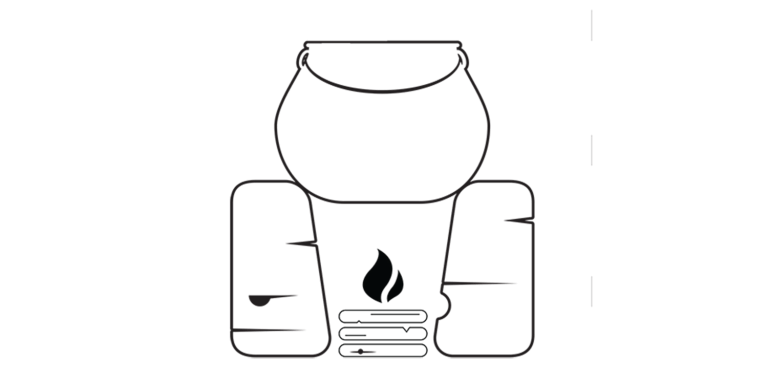New standards in cookstove design have helped instill a much-deserved formality in the technology. Ninety experts gathered in the Hague, Netherlands, in late February to hash out the details for rating stoves. With tens of millions of dollars pledged to promote improved stoves, including $105 million that the US government offered to the Global Alliance for Clean Cookstoves, defining standards was a necessary step. But the next steps are just as important: testing and improving the designs.
Until recently, improved-stove technology has been like the Wild West of design. Building a better cookstove is practically a rite of passage for students and young professionals with their sights set on underserved markets. And for good reason. Design options are myriad, and good stoves solve severe problems.
A clean-burning stove can clear the air in kitchens that are hazy with the smoke of open fires. Chronic exposure to kitchen smoke is associated with lung disease, cancers and death. The World Health Organization’s often-cited statistic puts the death toll at two million people per year. Kitchen smoke may be the fifth leading cause of death in developing countries, the WHO says.
Besides cutting air pollution, stoves that burn wood efficiently, and those that use alternative fuels, can also reduce deforestation and save time. Gathering wood and cooking with it can consume most of the day in some rural villages.
Tiers of performance
At the invitation of the Global Alliance for Clean Cookstoves, the Partnership for Clean Indoor Air and the American National Standards Institute, experts from 23 countries agreed on how to rate stoves and test them.
“We want to define what is an improved cookstove. When we started this a few years ago, everyone said they have a clean cookstove. But what do you mean by clean?” John Mitchell, at the US Environmental Protection Agency and one of the heads of the Partnership for Clean Indoor Air, told E4C.

Masons in a rural Kenyan village build a mud-brick rocket stove. Photo by Charles Newman
The ratings fall into four performance categories: fuel use and efficiency, total emissions, indoor emissions and safety.
“We developed different tiers of performance. In some places, fuel efficiency might not matter because you have plenty of fuel, but indoor emissions might. In other places, fuel efficiency might matter if fuel is scarce, but they cook outside so indoor emissions aren’t important,” Mitchell says.
That kind of flexibility is important in a technology with as much variation as cookstoves. Design variation turns around the kinds of fuels that cook food and the things you can do to the fuel. Take dung. Stoves optimized for burning dung cook food in Nepal’s highlands, where wood is scarce. And dung can also fuel gas ranges in Pakistan after it’s processed in a biogas digester. But burning wood in an efficient, mud-brick oven might make sense in a ventilated kitchen in rural Kenya.
Looking ahead: Testing and improving
From the newly defined standards it follows that testing is the next step. Fuel efficiency is easy to measure with a boiling test, but emissions, such as carbon dioxide and black carbon and other particulate matter, require costly equipment. One of the goals that came out of the talks is to establish test centers worldwide, equip them with the hardware they’ll need and staff them with trained stove testers and design consultants.
“In addition to testing the stoves, we want them to be able to make recommendations to improve the design,” Mitchell says. There are as many as 10 testing facilities around the world now, but they are not yet equipped to test emissions. They need about $50,000 in hardware, Mitchell says, and funds for training and salaries.

Open cooking fires turn a poorly ventilated kitchen into a smoke box, like this one in rural Kenya. Photo by Charles Newman
Behavior: the final frontier
As much as the success of this worldwide push for better stoves hinges on performance standards and testing, it also depends on something that stove designers have not always excelled at – understanding people’s behavior. The best designs are worthless when they’re not used.
Climate Healers saw that truism in action. The organization’s well-designed solar cookers sat unused outside of kitchens where women continued to cook over wood fires in a rural Indian village. The solar cookers only worked during the day, but the women needed to cook breakfast in the early morning and dinner in the evening. Now, Climate Healers is working with research teams to develop ovens that store solar radiation during the day to heat a cooking plate at night.
The anecdotal evidence for unused cookstoves is borne out in recent studies suggesting that improved stoves may go unused in many communities where they are introduced. The Washington Post reported on two studies that found little benefit for communities with new cookstoves. One looked at 2600 homes in 44 Indian villages and found that after two years, most were not using their improved stoves or they were using them incorrectly. Indoor air quality in those homes improved marginally in the first year, then declined to the level it was at before the installation of the new stoves by the second year.
The point is not lost. Behavioral research is underway, and more importantly, this problem has been on some experts’ radars for years. Nathan Johnson, a mechanical engineer with HOMER Energy in Boulder, Colo., studies energy use in rural villages. “Drive-by development” is the first problem that he cites with aid groups, and he points specifically to some of those that distribute cookstoves. “A one-size-fits-all solution leads to failure. NGOs have been everywhere in the world. It’s rare that I go to a village where I don’t see a failed project,” Johnson says. Doing homework can help.

